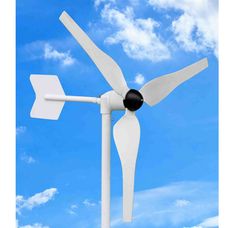Ocean Rowing – Electrical System
An ocean rowboat needs a constant electrical source to power its numerous electronics. The biggest consumer of electricity is the water maker. Electricity can be generated using solar panels or wind generators.
Solar Panels: Solar Panels are used most often for electrical generation in rowboats, and can reliably produce sufficient energy for the system. In foggy, grey or rainy conditions their output is significantly decreased. They are low maintenance and have good longevity. Performance is in direct ratio to cost, and they are not cheap.
Wind Generators: Wind generators are sometimes used in rowboats and are another reliable power source. Cost for cost they can produce more energy than solar panels, but of course they rely on steady winds. In the tropics winds are usually fairly consistent, but calms do occur which can be disastrous for a boat relying solely on wind power. Wind generators should be backed with some solar generation. In calm conditions this at least allows use of essential electronics such as navigation lights. The fast moving blades are dangerous, and the units should be mounted away from the cockpit. Some rowers have expressed concern as to whether the weight and resistance of wind generators might affect the self-righting ability of the boat.
Batteries: It is necessary to store the energy from the solar panels or wind generators, and this is done using a large lead-acid battery.
Marine batteries work on the same principle as a car battery, and are composed of lead immersed in an electrolyte bath. It is not good for a lead-acid battery to be deep-discharged. In fact, a lead acid battery fully discharged just two or three times will be seriously compromised. To prevent repeated deep discharging it is necessary to have a battery that can store at least four times your daily needs. Ideally the battery will be continually topped up.
There are a variety of marine batteries available. The best (and also more expensive) are deep-cycle batteries. These batteries are more robust and can better withstand the stress of deep discharges. They will, however, still be affected negatively by continued deep discharges. The maximum recommended discharge of deep-cycle batteries is 20%. Most batteries have the electrolyte in liquid form which requires periodic top ups of de-mineralized water. Some batteries have the electrolytes jellified or soaked in a glass mat within a sealed battery, which reduces the possibility of acid spillage.
A basic deep cycle marine battery of 100 amp hours or more should be sufficient for an ocean rowboat with a good charging system. The longevity of a deep cycle battery is 200-400 cycles at 20% discharge.
The capacity of the battery can be roughly gauged by the voltage. A fully-charged battery will register from about 12.8 volts to about 14. The battery should not be allowed to drop much below 12 volts. If the voltage drops lower than eleven, it is extremely damaging to the battery, and all efforts to minimize electrical usage should be made.
The battery should ALWAYS be replaced when acquiring a second-hand boat. It is impossible to accurately ascertain its condition, and due to the fact that a battery is very easily damaged by deep discharging, it is a risk not worth taking.
Regulator: A regulator is a device that controls the flow of electricity charging the battery. Overcharging batteries is harmful, so once the batteries are fully charged the regulator will automatically cut the flow.
Amperage/Voltage Meters: Amp meters indicate the flow of electricity. Two amp meters should be installed to indicate the inflow from the electrical generators and the outflow to the electrical appliances. A volt meter is also essential for indicating the status of the battery.


